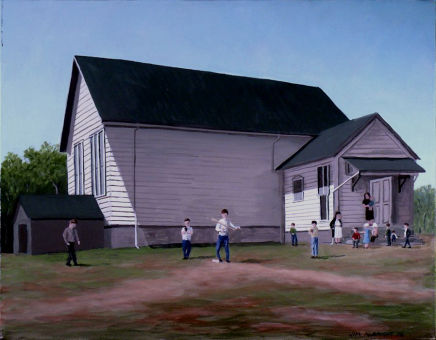I highly recommend painting on a gray, rather than a white, canvas. White tends to wash out colors whereas gray is much more color-compatible. The canvas can be made gray by using acrylic gesso that has been grayed with either a little black acrylic house paint or with a gray that has been mixed using complementary color acrylic artist's paints such as red and green or orange and blue.
In preparing an un-primed canvas, I typically use two coats of gesso. If the canvas has been primed then I only add one coat. In each case, I sand after each coat using about a medium (about 100 grit) sandpaper.

